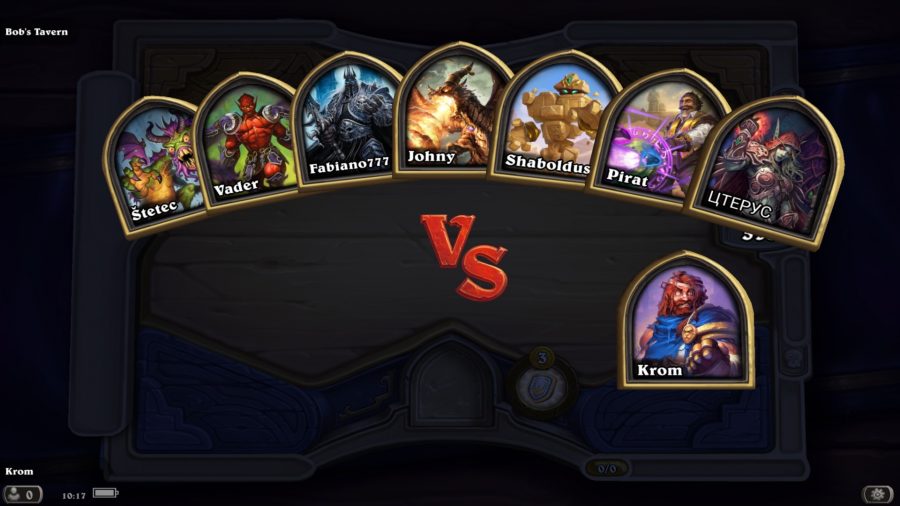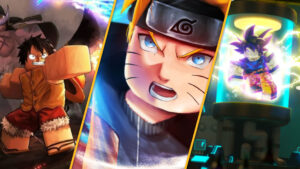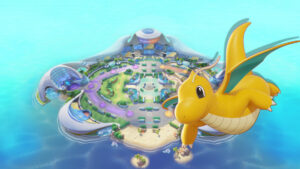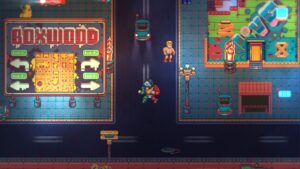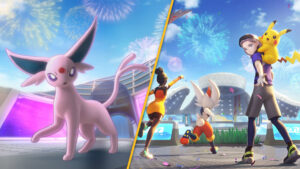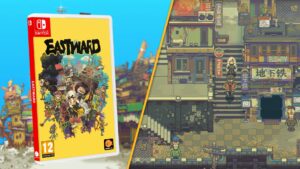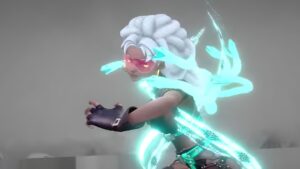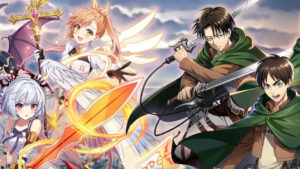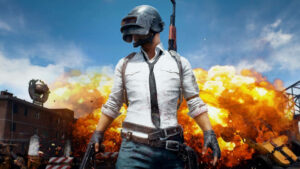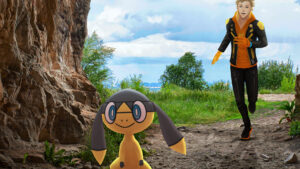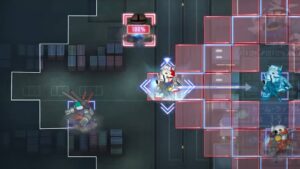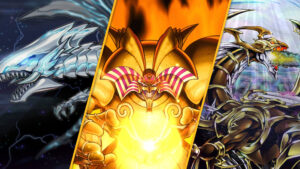Blizzard has finally decided to wade into the auto chess phenomenon, with their fresh game mode, Hearthstone Battlegrounds. The problem many current auto chess games have is that they can feel very much the same – from the pieces, to the round-to-round admin, to the raw action, you’re basically playing the same game. Some games have tried to come up with innovations – Teamfight Tactics uses a hex grid instead of the classic square chess board. Might & Magic Chess Royale has mashed both battle royale and auto chess. But Hearthstone Battlegrounds feels truly unique, thanks to its use of the existing Hearthstone CCG, transformed into a fresh auto chess mode.
And with this fresh game mode, comes a fresh set of tactics – which is where we come in. We’ve put together this Hearthstone Battlegrounds guide full of tips, tricks, and cheats perfect to help any beginner shuffle the deck in their favour.
If you’re a passionate Hearthstoner, you should check out our Hearthstone decks guide. Or, if you’re more interested in the chess side of things, you can head over to our list of the best auto chess games on mobile to find something new to play.
How to Play Hearthstone Battlegrounds
Hearthstone Battlegrounds is available on both PC and Mobile, iOS and Android. It’s part of the main Hearthstone card game client, so as long as you can download and play that, you’re fine. Simply go to ‘modes’ in the main menu and it is listed next to the ‘arena’ mode.
When you start up a match, you’re offered the choice between two randomly drawn heroes out of a total of 33. Each hero has a special power (similar to how the main game works) that you can spend gold on to activate. Not all abilities are considered equal, but you won’t know that until you start playing the game and try each one out. Keep an eye out for our incoming heroes guide!
RECRUIT/BUYING PHASE
Like other auto chess games, Battlegrounds consists of a series of rounds that comprise of both a buying phase and a combat phase. The buying phase is similar but with some very key differences:
- Every minion, regardless of tier, costs three gold to buy.
- You can get one gold back by selling a minion from your board (not your hand) to the tavern.
- You can spend gold to ‘level up’ the tavern so that you get access to higher tier units.
- It costs one gold to refresh the trade row to get a new draw of minions.
- For free, you can ‘freeze’ the row in place so that it doesn’t reset at the start of the next round.
- You start the game with three gold, and your maximum increases by one a turn until it caps out at ten gold.
- At the start of every round your gold pool will fill up to the current maximum.
- As long as you’re under ten gold, you can increase your gold pool beyond your starting limit via selling minions back to the tavern.
It can be a bit fiddly to manage your minions and your board sometimes, but essentially you drag the minion you want from the row to your hero, and it goes into your ‘hand’. As far as we know there is no hand-limit. Once in your hand you can then deploy it from the board.
Collecting triples of a minion is still a thing in Battlegrounds, but it’s more limited. You only need to do it once to get a ‘gold’ version of a minion, which has better base stats (and keeps any stat buffs) and potentially a better ability, depending on the card. Combining three is automatic and the minion is returned to your hand in its gold state for you to play again.
When you play a gold minion, you get given a bonus card that lets you choose one card from a randomly drawn set of three from the tavern tier above the one you’re currently at, so you essentially get two minions for the price of one.
COMBAT PHASE
Once the timer runs out, the tavern will close and you’ll move onto the combat phase. You’ll be assigned a randomly selected opponent from the other seven players (their avatar will be highlighted in red on the side column).
There are no ‘econ’ or ‘mob’ rounds in Battlegrounds (and no items either), so the only respite you get is if there is an odd number of players in the game. In this instance, you will face Kel’Thuzad – essentially an AI opponent who will use the board state (and tavern tier) of the most recent previously defeated player. It’s worth noting that every three combat rounds, you won’t face Kel’Thuzad (not another player) more than once, unless there are only two players left.
Each player’s board of minions square up to each other, and combat begins using the following rules:
- Start of combat phase abilities will trigger first.
- Then, starting with the first minion on the left, each player’s board takes turns attacking the opposing player one minion at a time.
- The target of a minion’s attack is randomly selected, unless there are ‘Taunt’ minions on the board, in which case those get attacked first.
- Attacking works like it does in Hearthstone; the attacking and defending minion apply their attack and defence stats to each other simultaneously.
- Once you’ve gone through your board, the sequence starts again with whoever’s left.
- This continues until one player is the only person left with minions on the board (or neither player, in which case it’s a draw).
- Damage is dealt to the losing player’s health pool. Damage equals the star rating of all surviving minions plus your Tavern rating.
Keywords and card abilities of course modify the above. For example if a minion’s Deathrattle ability summons a new minion in their place, that minion will then become the next in line to attack, and not the minion that was originally supposed to be next. Once a winner has been determined and damage dealt, it’s onto the next round. Barring one exception, Heroes start with 40 health.
Heathstone Battlegrounds Tribes and card abilities
There’s a lot to unpack as to what makes Battlegrounds different from the other best auto chess games on mobile, and almost all of it stems from the fact that they’ve based it on the Hearthstone CCG. The fact that a Hearthstone match means there are no animated pieces jumping around, (which some might say makes it less vibrant) it does mean there is space for the tactical decision-making to be richer.
The order in which you place your minions is very important, as triggering the right keywords in the right sequence can make or break a strategy. If you’re relying on summoning minions through card abilities, you need to make sure there’s space on your board for them to go. Minions can also be disposable, as you can summon a minion for its battle-cry effect, and then instantly sell it so you can fire off your hero ability, or even buy someone else if you’re short on gold.
There are still some recognisable elements, such as deck building around minions of the same type. There are fewer ‘tribes’ in Battlegrounds, and there are no benefits for having a certain number of each tribe. They instead synergise through card abilities much like the main game.
The principal tribes in the game are:
- Demons
- Mechs
- Beast
- Murlocs
- Dragons
Murlocs tend to be stronger in the early game, whereas Mechs are stronger in the late game. Demons are interesting but require the right hero, or the right build to really work (And can damage you for using them). Beasts are a bit middle of the road, but can buff each other and have a lot of triggering and summoning effects. Dragons are a recent addition, but are almost invariably about buffing other Dragons, or granting them protection, as with Divine Shield.
Along with tribes and card abilities, keywords make up the third important tactical dimension in this game. These are lifted straight from Hearthstone and behave largely as they do in the main game. Important keywords you may recognise are:
- Taunt – Means enemies must attack this unit first.
- Divine Shield – Grants a unit invulnerability against one attack.
- Battlecry – An ability activates when the card is played.
- Deathrattle – An ability activates when the card is destroyed.
- Charge – This unit can attack immediately.
- Magnetic – A mech played left of another will fuse with it.
- Reborn – When destroyed, this unit comes back with one HP.
- Overkill – Deals excess damage.
- Poisonous – Destroys an enemy in one.
- Discover – Choose one of three different cards.
- Immune – A unit can’t be attacked.
- Windfury – A unit can attack twice.
- Adapt – Choose one of three bonuses for a minion.
It would be fair to say that the most prevalent universal strategy is stat boosting – there is a lot of potential for boosting your minion’s stats in a Battlegrounds match (which is a mechanic that doesn’t really apply to other auto chess games, making it unique here), to the point where you’ll see some crazy numbers in the late game. But there’s a large amount of room for versatility, as the way you synergise all of these abilities, is generally what determines your victory, or defeat.
Generally, it’s a good idea to be building with stat-boosting in mind. A lot of the stat buffs in Battlegrounds are permanent and persist from round-to-round, which means they can stack buffs as they come up. This is essential for keeping momentum. Summoning additional minions is probably the second most important strategy, as it will help ensure you’re the last hero standing.
Being able to deal damage outside of a minion’s attack, and attacking multiple minions with a single attack, are also an excellent means of crowd control as well.
Hearthstone Battelgrounds Hero Tier List
As with any good competitive title, there’s a tier list. Now, this is a bit of weird one because it’s not like you get a choice in terms of what hero you get assigned when playing a game of Battlegrounds. You’re served up two and get to pick one. We’ll go through the generally accepted top tier, so you know what to look out for and why, but we’ll spare you every hero for now, as you might find it a tad depressing before entering a match and finding yourself offered a couple of tier fours.
Tier 1 Hearthstone Battlegrounds Heroes
YOGG-SARON, HOPE’S END
Yogg’s primary ability means building up a tribe strategy is difficult, but he’s an excellent early-to-mid game player. Not only can you get a minion for two gold, but you get to buff its stats by +1/+1. During the initial stages that extra bit of health and/or attack power can make the difference between winning or losing. Or, as I’ve had experienced on several occasions, the difference between losing and drawing.
Note that the minion you get is tied to what minions are currently present on your shopping row. This means you can manipulate which one you get by buying other minions, and selling them back if you don’t want them; although this strategy doesn’t hold up towards the late game.
DANCIN’ DERYL
This is a strong hero but one that can be quite tricky to pilot. Essentially you will need to buy token-generating minions so that you can use them for trade-in fodder, as well as buying up minions from the row so that the ‘right’ minion gets buffed. Note that both +1/+1 buffs can go to the same minion, meaning that it’s even more important to make sure you’re pulling out all the tricks to get those buffs in the right places.
Ideally, you’ll do all this in one turn, but the freeze function will allow you to carry over minions to the next buying phase.
ARCH-VILLAIN RAFAAM
You can sense a theme building; all of the strongest heroes at the moment involve getting minions by alternative means. Rafaam doesn’t have the stat boost that comes with the above two heroes, but he makes up for it by theoretically improving the overall quality of the minions you get.
For one gold, you essentially get a free minion (providing you actually kill one during the combat phase), and if you don’t like it you can sell it back, meaning that at the very least you can break even. This can be a great way of getting triplets of minions that you’re fighting over someone else with, but obviously you can’t really ‘choose’ which minion you’ll get.
EDWIN VANCLEEF
From the beginning it’s become somewhat apparent that this game’s principle problem is out-of-control stat buffing; so what could go wrong including a hero whose single theme is out-of-control stat buffing? This is an ability that scales over time, as it’s tied to your ability to buy minions – it becomes stronger in the late game when you have more coins to spend.
Beyond that though, it has a lot of tactical applications: you can use it to buff a single minion, redo levels over multiple turns, or you can use it to shore-up key support minions so they last longer in the combat phase. Given my experience so far, you’ll want to do the former, as it’s the ‘super minions’ that can make or break a board.
Deathwing
In the case of the Dragon formerly known as Neltharion the Earth-Warder, the hero power is pretty simple. Deathwing’s ability to buff all minions by +3 is very powerful in the right circumstances, because if you can use your unit abilities to effectively negate enemy minions, you’ll be hitting with a lot of power. It’s also great because it’s a passive ability, meaning you don’t even have to spend any coin to get its effect.
It’s an all-or-nothing ability, but at the same time, what do you expect from a literal world-shattering god dragon?
Nozdormu
Battlegrounds recent addition of Dragons has really shaken things up, and another scaly serpent with a powerful ability is Nozdormu. Another one of the five Dragon Aspects, in this case, time, this bronze beast makes your first refresh free per round, which adds a huge amount of versatility to your game.
Also like Deathwing, it’s another passive ability, meaning you can save those coins for your precious minions.
A. F. KAY
Last, but not least – Miss Kay. She’s another tricky one, because for the first couple of turns you’re not going to be able to do anything, which means you’ll have to come out swinging from turn three onwards. Having two tier three minions will help with this, as they’ll likely be better than what everyone else has, but you’ll have less time to pull a strategy together and will need to make up for lost ground.
On the plus side, this means you can be a bit more aggressive with your tavern upgrades early on, as you won’t need to worry about saving money to buy minions.
Final Thoughts
Hearthstone Battlegrounds is good. It’s got a lot going for it that makes it both superior and unique; especially when compared to other auto chess variants. But it’s also being held back by the fact that it uses the card game as its base. Hearthstone has developed a bit of a reputation for facilitating ridiculous combos and strategies, and that too seems to be embedded in the Battleground’s meta.
Stat buffing is extremely common in the game – it’s the primary strategy that matters and it can be hard to keep track of what your opponents are capable of. In other auto chess games the escalation is mainly in the form of key pieces and how many two or three star minions you can assemble. In Battlegrounds, there’s more math involved, so it’s harder to predict how strong your opponents will actually be.
Still, the economy system is better, and the tactical decision-making is a lot more rewarding. Hopefully the above tips and tricks will give you some grounding, and help spur you on to greater heights in this intriguing game mode. If that hasn’t given you a fill of deck building, be sure to see our picks for the best mobile card games.
- "
- &
- abilities
- About
- access
- Action
- Additional
- admin
- AI
- All
- alternative
- android
- animated
- Another
- applications
- around
- auto
- automatic
- available
- avatar
- Battle
- beginner
- benefits
- Bit
- board
- bonus
- Bonuses
- boosting
- Box
- build
- Building
- buy
- Buying
- Cards
- case
- Chess
- Coin
- Coins
- Column
- Common
- Competitive
- continues
- Costs
- Couple
- Current
- damage
- deal
- Deals
- defence
- destroyed
- developed
- different
- Dimension
- Dragon
- During
- Early
- economy
- essential
- experience
- eye
- fair
- Finally
- fine
- Fire
- First
- form
- Free
- Freeze
- fresh
- full
- function
- game
- Games
- Gold
- good
- grants
- great
- Grid
- guide
- having
- head
- Health
- here
- Highlighted
- hold
- How
- HP
- HTTPS
- huge
- i
- idea
- important
- Including
- Increase
- involved
- IT
- keeping
- Key
- Keywords
- large
- levels
- Limited
- Line
- List
- Long
- Making
- Match
- math
- Matters
- maximum
- May
- Mobile
- Momentum
- money
- more
- move
- numbers
- order
- Other
- PC
- picture
- pilot
- play
- player
- players
- Playing
- Plus
- pool
- potential
- power
- powerful
- present
- price
- Principal
- protection
- pulling
- Puzzle
- quality
- Raw
- road
- rounds
- rules
- saving
- selected
- sell
- sense
- Series
- set
- Shopping
- Short
- Simple
- So
- Space
- spend
- square
- start
- State
- stats
- Strategies
- Strategy
- Summons
- superior
- support
- system
- tactical
- tactics
- Target
- The
- theme
- theoretically
- Through
- time
- tips
- tips and tricks
- together
- top
- track
- trade
- tribes
- triples
- unique
- Universal
- upgrades
- version
- What
- WHO
- winning
- Work
- works
- worth
